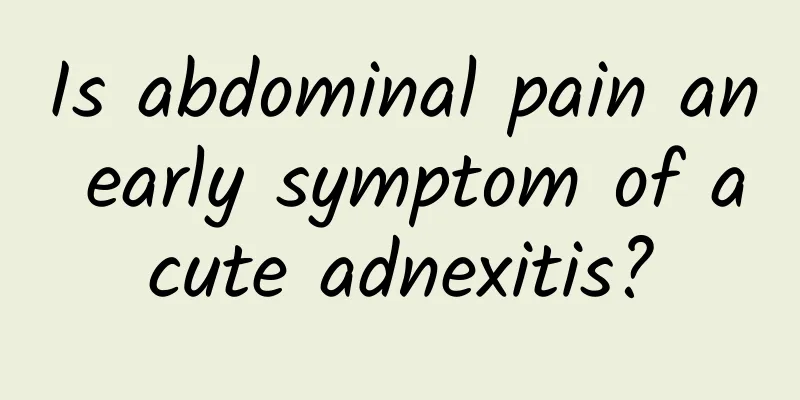What are the risk factors for uterine fibroids? What is the high-risk age group for uterine fibroids?

|
Women with uterine fibroids will lead to many adverse consequences. Therefore, we should pay attention to reasonable treatment. Women can choose many methods, such as surgery, conservative treatment and home treatment. Today, let's take a look at the common causes of uterine fibroids, hoping to help more women. How are uterine fibroids caused? The increase in young patients with uterine fibroids is largely related to the improvement of women's living standards and their excessive intake of estrogen. Uterine fibroids refer to nodular tumors growing on the smooth and soft uterine wall of women. Uterine fibroids have become the number one gynecological disease, and surgical cases of this disease account for more than 60% of gynecological surgeries. Uterine fibroids are generally hormone-dependent benign tumors. Women who eat too much high-fat diet, are overweight, take hormone drugs and health products for a long time, and use cosmetics containing estrogen can cause small doses of estrogen to accumulate in the body, which is the main cause of uterine fibroids. Compared with 20 years ago, the high incidence of uterine fibroids in women has now been advanced from 40 to 35 years old. Uterine fibroids can be single or co-exist. For some postmenopausal women, uterine fibroids can shrink or disappear on their own due to the decline in estrogen levels. However, if large uterine fibroids are not treated, they can lead to menorrhagia, abdominal pain, infertility or anemia, which can affect their quality of life to varying degrees. Causes of uterine fibroid bleeding: 1. Due to the deformation and enlargement of the uterine cavity, the endometrial area increases, and the intramyometrial fibroids cause menorrhagia and prolonged bleeding; 2. Fibroids hinder uterine contraction or affect chronic pelvic congestion, leading to bleeding; 3. Uterine fibroids combined with ovarian anovulation, endometrial hyperplasia or polyp formation, leading to menorrhagia 4. Due to the increase of mucosal area, surface ulcers and infection, local congestion and other reasons, submucosal fibroids can cause menorrhagia, excessive frequency, spotting or irregular bleeding; 5. Chronic pelvic inflammatory disease can cause congestion and increased menstruation; 6. Menopausal irregular menstruation Generally speaking, uterine fibroid bleeding is mainly caused by increased menstruation. Menstrual bleeding is not common in simple fibroids. If there is, it often manifests as complications such as malignant changes, polyps, submucosal fibroids, and endometrial hyperplasia. Therefore, in the case of menstrual bleeding, further examination should be performed to eliminate malignant changes. |
>>: How are uterine fibroids caused? Can female depression induce uterine fibroids?
Recommend
How to treat chronic pelvic inflammatory disease patients to achieve recovery
How to treat chronic pelvic inflammatory disease ...
How are uterine fibroids caused? Can female depression induce uterine fibroids?
Uterine fibroids (Hysteromyoma) Uterine leiomyoma...
What causes vaginitis?
What is vaginitis? What are the causes of vaginit...
Warning: Three situations can easily cause irregular menstruation
What are the causes of irregular menstruation? Ir...
Beware of cervicitis caused by condyloma acuminatum virus
Cervicitis is a common gynecological inflammation...
What to do if you have uterine fibroids
Uterine fibroids are the most common benign tumor...
Introduction and causes of congenital absence of vagina
Nowadays, more and more people are suffering from...
How to reduce the impact of painless abortion on the body?
How to reduce the impact of painless abortion on ...
If you want to stay away from cervicitis, you must understand its cause
Once cervicitis affects women, it is difficult to...
What should I do if I have uterine fibroids during pregnancy? Can I still have children if I have uterine fibroids during pregnancy?
If uterine fibroids are found after pregnancy, th...
Treatment of ovarian cysts with Xiaonang Mixture
Most patients with ovarian cysts often experience...
Does intermittent fasting reduce your basal metabolic rate? Research: It does not affect the basal metabolism and can help you lose 3.5 kg per month on average
According to many scientific arguments, there is ...
Simple mild symptoms of cervicitis
Simple mild symptoms of cervicitis: In daily life...
Supermodel Akemi wears slimming pants to lose weight and suffers from skin rash and allergies
In order to maintain their good figures, many fem...
Correct understanding of cervicitis is very important
Everyone wants to have a healthy body, but there ...









